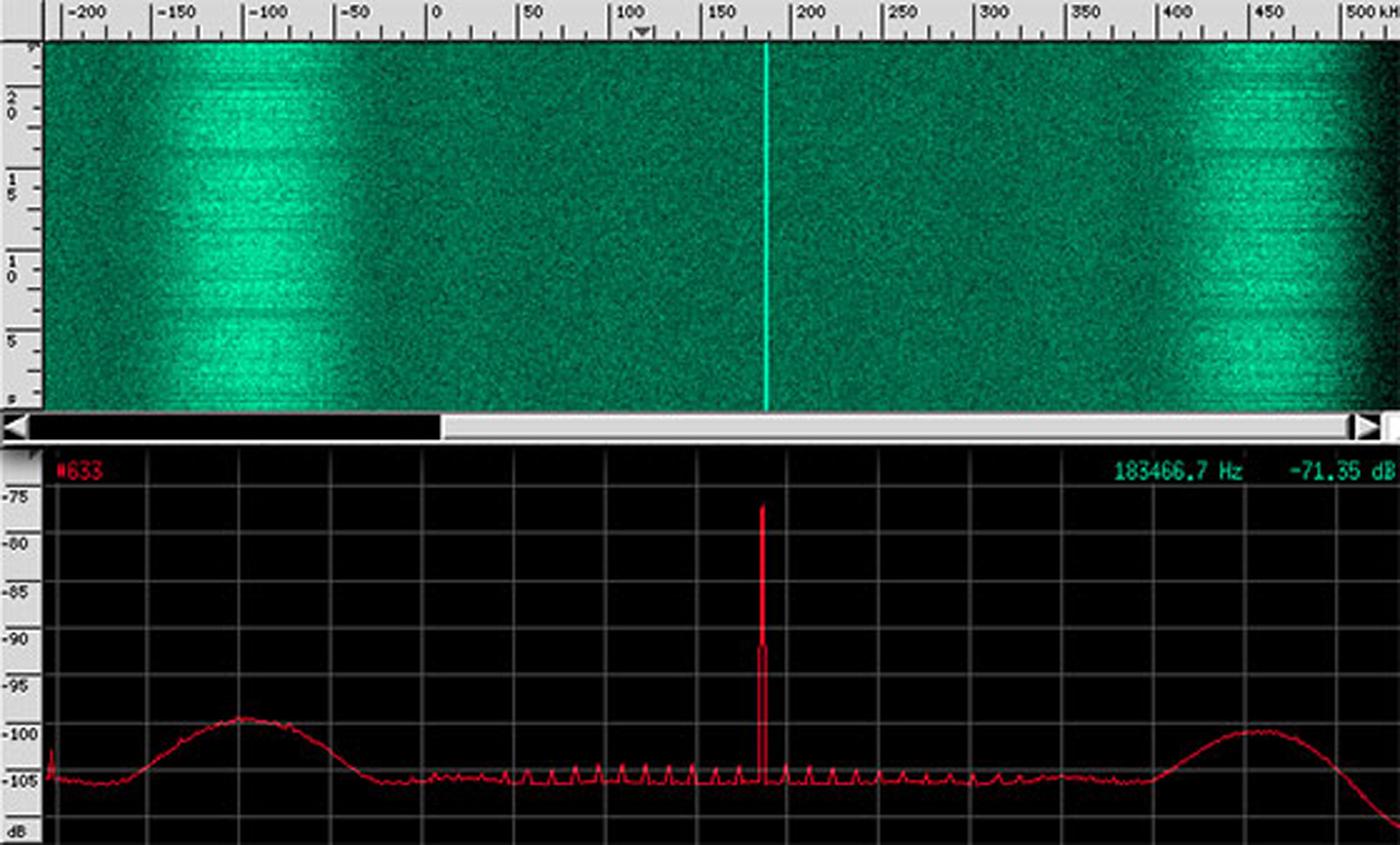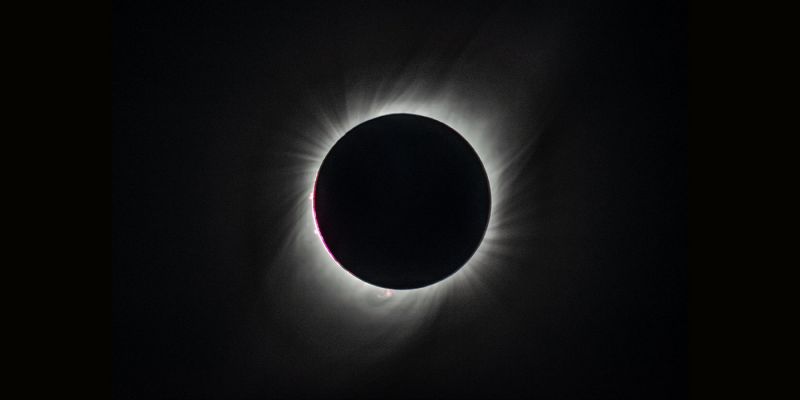The Allen Telescope Array picks up the signal from the OSIRIS REx spacecraft.

The Allen Telescope Array (ATA) uses 42 radio dishes to search for radio transmissions from ET. How do we know the system is working? To answer that question, we point the dishes in the direction of a spacecraft we know is transmitting radio signals back to Earth. If our software detects a radio transmission at the exact frequency as the spacecraft's transmission, we know things are working as they should. On September 11, 2016, we tested the ATA by pointing at the newly launched NASA Osiris-REx spacecraft.
The detection of the radio transmission can be visualized as in the image below. The top graph is frequency on the horizontal axis, time on the vertical axis. The signal strength is represented by the brightness. You can clearly see the carrier signal as the solid line in the middle and the data sidebands at the sides.
The bottom graph is the same data represented a bit differently. Frequency on the horizontal graph, signal strength on the vertical axis.
The frequency and strength of the signal detected, as shown in the image below, was exactly as we predicted for this spacecraft. This was indeed the Osiris-REx radio transmission to Earth. Our radio transmission system passed the test.
The ATA's unique wide field of view was designed to be the best instrument to search for SETI signals, but is therefore also well suited to search for spacecraft, which the SETI Institute has done successfully for NASA and others on previous occasions.





